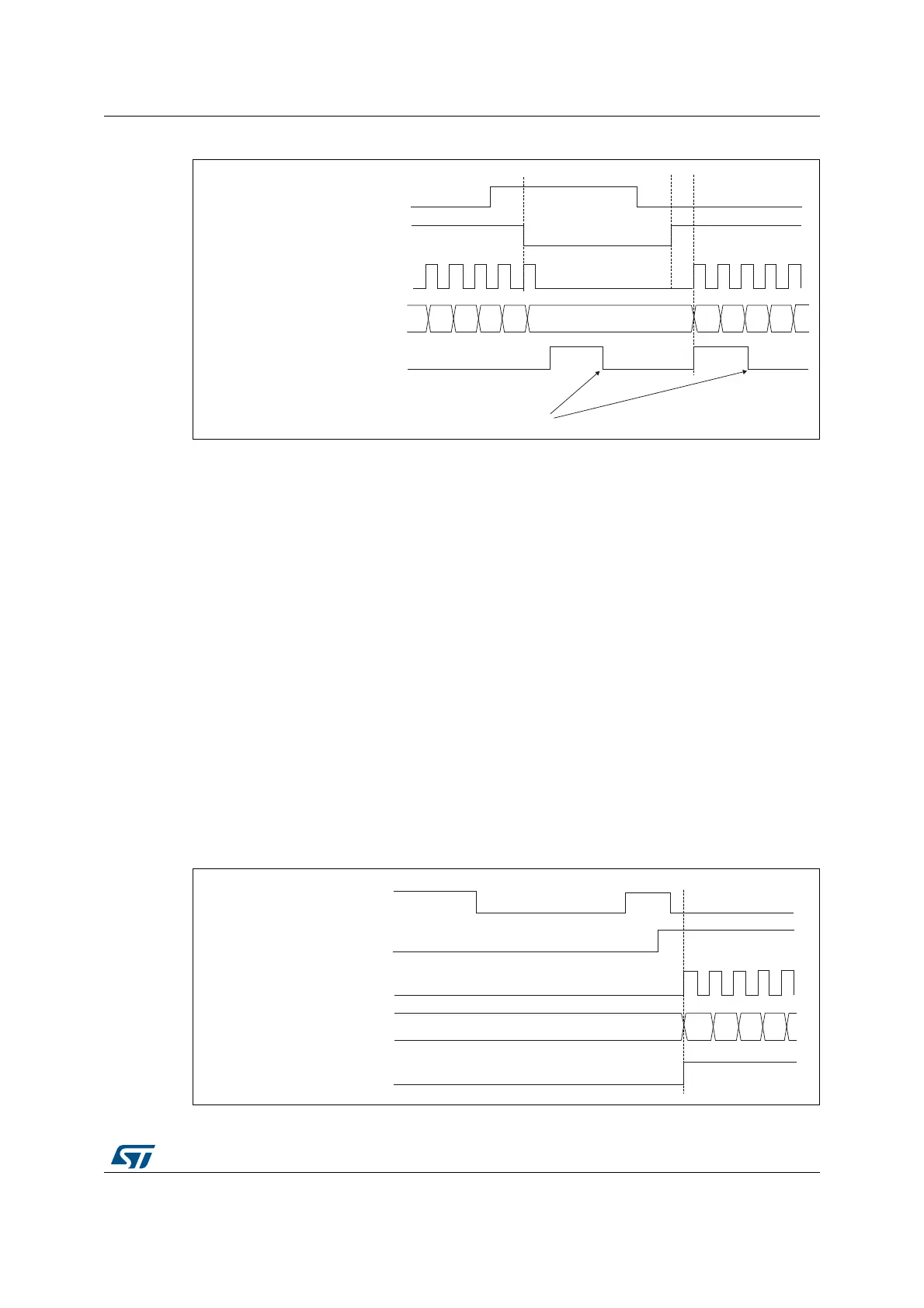RM0440 Rev 4 1295/2126
RM0440 General-purpose timers (TIM2/TIM3/TIM4/TIM5)
1343
Figure 429. Control circuit in gated mode
Note: The configuration “CCxP=CCxNP=1” (detection of both rising and falling edges) does not
have any effect in gated mode because gated mode acts on a level and not on an edge.
Slave mode: Trigger mode
The counter can start in response to an event on a selected input.
In the following example, the upcounter starts in response to a rising edge on tim_ti2 input:
1. Configure the channel 2 to detect rising edges on tim_ti2. Configure the input filter
duration (in this example, we do not need any filter, so we keep IC2F=0000). The
capture prescaler is not used for triggering, so it does not need to be configured. CC2S
bits are selecting the input capture source only, CC2S=01 in TIMx_CCMR1 register.
Write CC2P=1 and CC2NP=0 in TIMx_CCER register to validate the polarity (and
detect low level only).
2. Configure the timer in trigger mode by writing SMS=110 in TIMx_SMCR register. Select
tim_ti2 as the input source by writing TS=00110 in TIMx_SMCR register.
When a rising edge occurs on tim_ti2, the counter starts counting on the internal clock and
the TIF flag is set.
The delay between the rising edge on tim_ti2 and the actual start of the counter is due to the
resynchronization circuit on tim_ti2 input.
Figure 430. Control circuit in trigger mode
MSv62362V1
37
tim_cnt_ck, tim_psc_ck
Counter register
38
32 33
34
35 36
3130
TIF
tim_ti1
CEN
Write TIF = 0
MSv62363V1
37
Counter register
38
34
35 36
TIF
tim_ti2
CEN
tim_cnt_ck, tim_psc_ck

